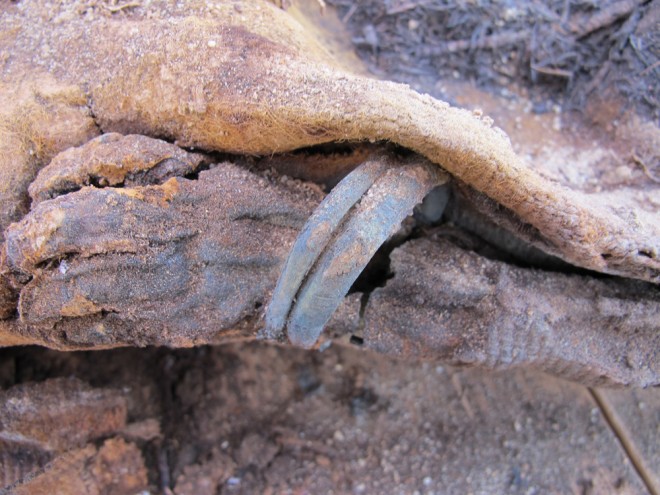 Maybe you’ve heard of the Million Man March? Or the Million Mom March? Or last year’s Million Muslim March? Brace yourself for a macabre riff on that theme. A team of archaeologists from Utah’s Brigham Young University (BYU) discovered an ancient Egyptian cemetery that has more than 1 million mummies. Presumably, they don’t march.
Maybe you’ve heard of the Million Man March? Or the Million Mom March? Or last year’s Million Muslim March? Brace yourself for a macabre riff on that theme. A team of archaeologists from Utah’s Brigham Young University (BYU) discovered an ancient Egyptian cemetery that has more than 1 million mummies. Presumably, they don’t march.
“We are fairly certain we have over a million burials within this cemetery. It’s large, and it’s dense,” said Project Director Kerry Muhlestein. The professor from the BYU Department of Ancient Scripture presented a paper on their findings at the Society for the Study of Egyptian Antiquities Scholars Colloquium in Toronto last month.
For almost 30 years, BYU archaeologists have excavated Fag el-Gamous cemetery and a nearby pyramid (pictured below) which predates the cemetery by two millennia. The sites are in central Egypt, in the Faiyum Governorate. Many of the mummies date from the 1st century to the 7th century A.D., the days of Roman or Byzantine Empire rule.
This cemetery was no regal burial ground. Researchers said that most of the people buried here were laid to rest without coffins or personal belongings. Their internal organs were rarely removed; instead, the arid natural environment mummified their remains.
“I don’t think you would term what happens to these burials as true mummification,” Muhlestein said. “If we want to use the term loosely, then they were mummified.”
The lead image is believed to be of a toddler, around 18 months old, who was wrapped in a tunic and adorned with a necklace and two bracelets on each arm, buried more than 1,500 years ago. The jewelry suggests that the mummy is a girl, but the archaeologists cannot be sure.
The team also discovered beautiful items – remarkably preserved – including linen, glass and even colorful baby booties. “A lot of their wealth, as little as they had, was poured into these burials,” Muhlestein said.
Ancient textiles in excellent condition, particularly knitted artifacts, are rare finds in the Middle East where punishing climate wreaks havoc on delicate fibers. Knitting is believed to have originated in the Middle East, most likely Egypt where the earliest known examples were found, such as toe-socks. These little gems (see below) may snatch the world record from a pair of red socks housed in London’s Victoria and Albert Museum in London. That pair came is dated between the 3rd and 5th centuries.
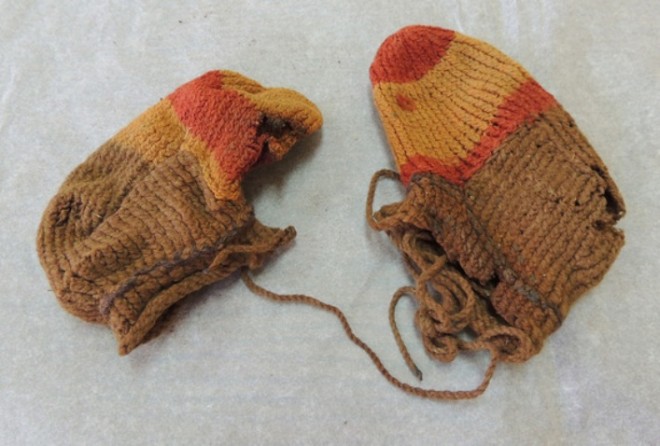
It remains unknown as to where these mummies came from, but the researchers do not believe the people resided locally. To date, the team has excavated more than 1,000 mummies, and each suggests a unique story.
“We once found a male who was over 7 feet tall who was far too tall to fit into the [burial] shaft, so they bent him in half and tossed him in,” Muhlestein told the audience in Toronto. Muhlestein told Live Science in an interview that is an extraordinary height given the generally poor nutrition these people had.
The team is in the early stages of creating a database of all the mummies it has excavated. When complete, the database will help the researchers study burial patterns in the area. Some early analysis is intriguing, as the database can now “show us all of the blond burials, and [it shows] they are clustered in one area, or all the red-headed burials, and [it shows] they’re clustered in another area,” Muhlestein said, suggesting that burials were segregated by family or genetic groups.
Ten thousand exhumed, nine hundred and ninety nine thousand to go.
Image by Professor Kerry Muhlestein from LiveScience

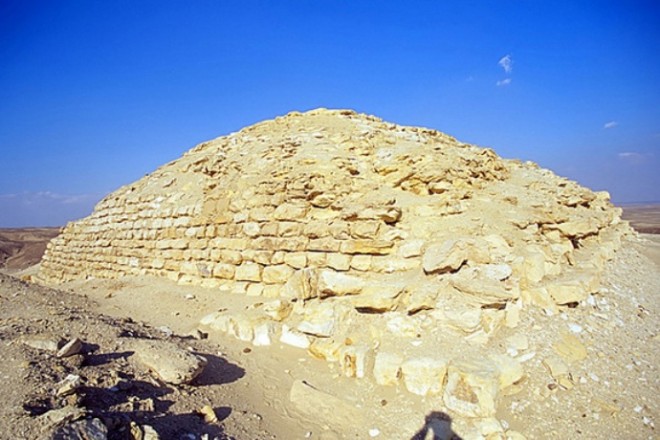
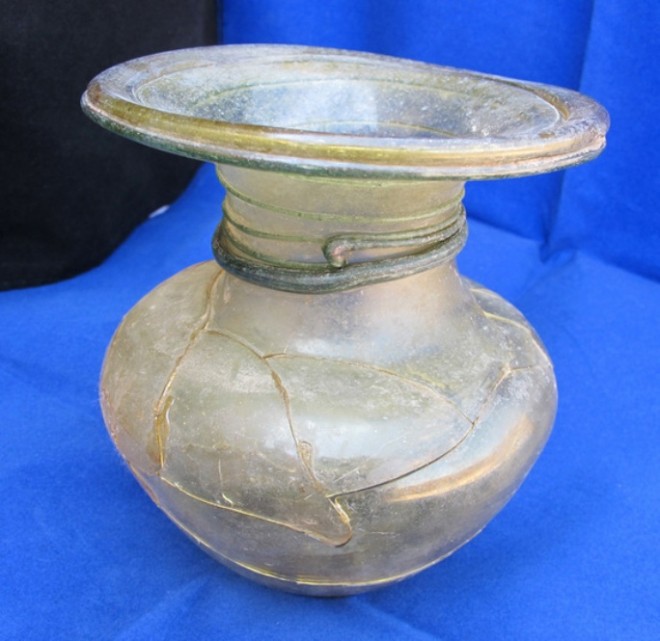
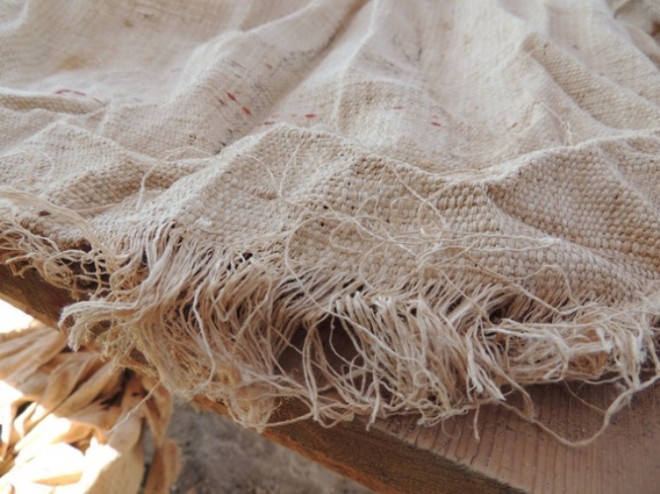
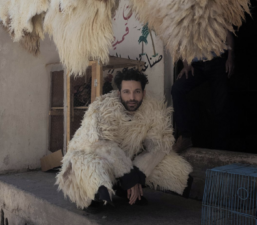
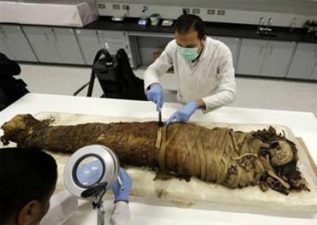
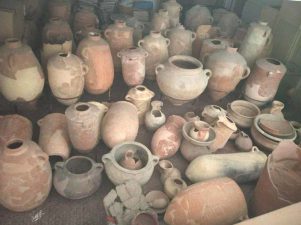
Wow! Dig.
These little booties were made by nalbinding. It’s a much older technique than knitting. If you are refering to the red toe socks in the V&A, these: http://collections.vam.ac.uk/item/O107787/pair-of-socks-unknown/, they aren’t knitted, they are also nalbinding.
http://www.Knitty.com has an article about knitting history, including photos of early knitted vs nalbinded artifacts, and links to how nalbinding is done: http://www.knitty.com/ISSUEspring06/FEAThistory101.html
There used to be a few nalbinded artifacts mis labeled as knitted or twisted stitch knitted in museums, but they are gradually getting corrected, as curators are becoming more educated in handcraft techniques.
So far, knitting hasn’t been date back much past 1000-1200ish CE.
What I love best about these booties is that they have the stripes reversed on the two feet, just like I often do in my own work!
Colleen – as a knitting addict, I am so glad for your comment! Ages back, Richard Rutt (aka The Knitting Bishop) published a book on the history of knitting – where I first heard of nalbinding. At the time, tried to learn more – not much luck. So, thanks for those links. Very difficult to get knitting mags or books here in Jordan (most locals seem to prefer crochet, and nobody uses written patterns). Luckily I have a few archeologist friends who never tire of talking about ancient fiber works. Nothing better (to a yarn junkie) to see ancient samples – can so easily imagine having lots to talk about with the mystery people who created them. Thanks for the great information, and happy knitting!